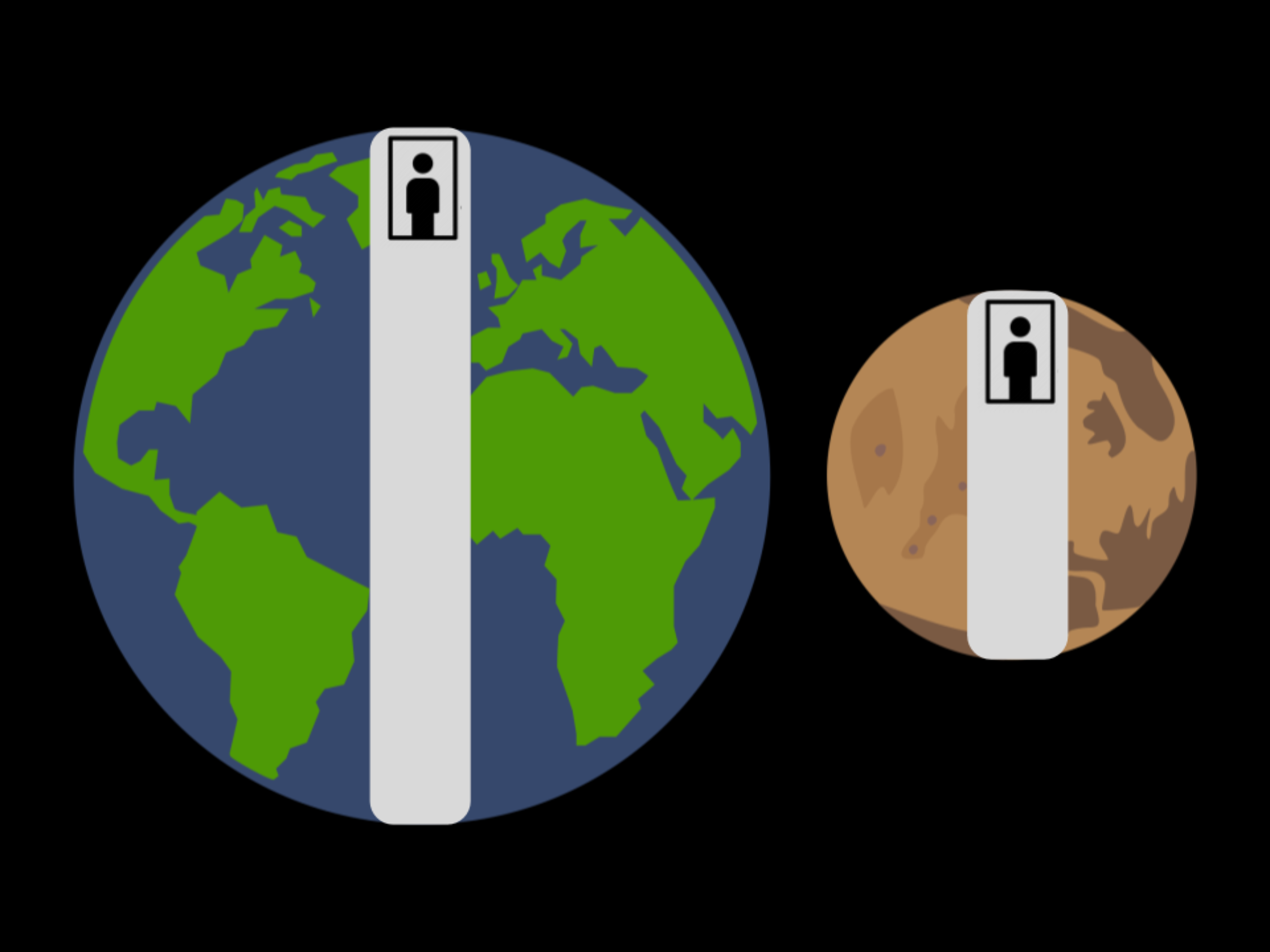The Down-To-Planet Elevators
Mega-Levator Co. has installed three giant frictionless elevators: one down a tunnel through the axis of rotation of the Earth, and one down a tunnel through the axis of rotation of Mars. If the elevators are operated solely using the force of gravity, which elevator will reach the other side of the planet first?

Assume that both Earth and Mars are perfect spheres with equal and uniform density.
This section requires Javascript.
You are seeing this because something didn't load right. We suggest you, (a) try
refreshing the page, (b) enabling javascript if it is disabled on your browser and,
finally, (c)
loading the
non-javascript version of this page
. We're sorry about the hassle.
2 solutions
Suppose that the elevator has a mass m is a distance x from the centre of the planet. By Newton's Shell Theorem, the force exerted by a uniformly dense sphere of radius R > x and mass M is then equal to the gravitational force of a point mass, at the centre of, and with the mass of a uniformly dense sphere of radius x . If our planet has density ρ , then the mass of our sphere with radius x is
M x = 3 4 π ρ x 3
The force on the elevator is thus
F = m x ¨ = − x 2 G M x m = ( − x 2 G m ) ( 3 4 π ρ x 3 ) = − 3 4 π ρ m G x
⟹ x ¨ = − 3 4 π ρ G x
This is the equation of a harmonic oscillator with angular frequency ω = 2 3 π ρ G . For initial conditions x ( 0 ) = R and x ˙ ( 0 ) = 0 , the solution is x = R cos ω t . The time it takes for the elevator to reach the other side of the planet is equal to half the period:
2 T = ω π = 2 1 ρ G 3 π
As we can see, the elevator's time only depends on the planets' densities.
The motion of a body through a tunnel along the axis of rotation of a sphere is periodic wih a period that depends on the density of material of the sphere and universal gravitational constant only. If density is the same for two spheres of different sizes, then the periods, and hence the half periods which are the times to cross the tunnels are also the same.